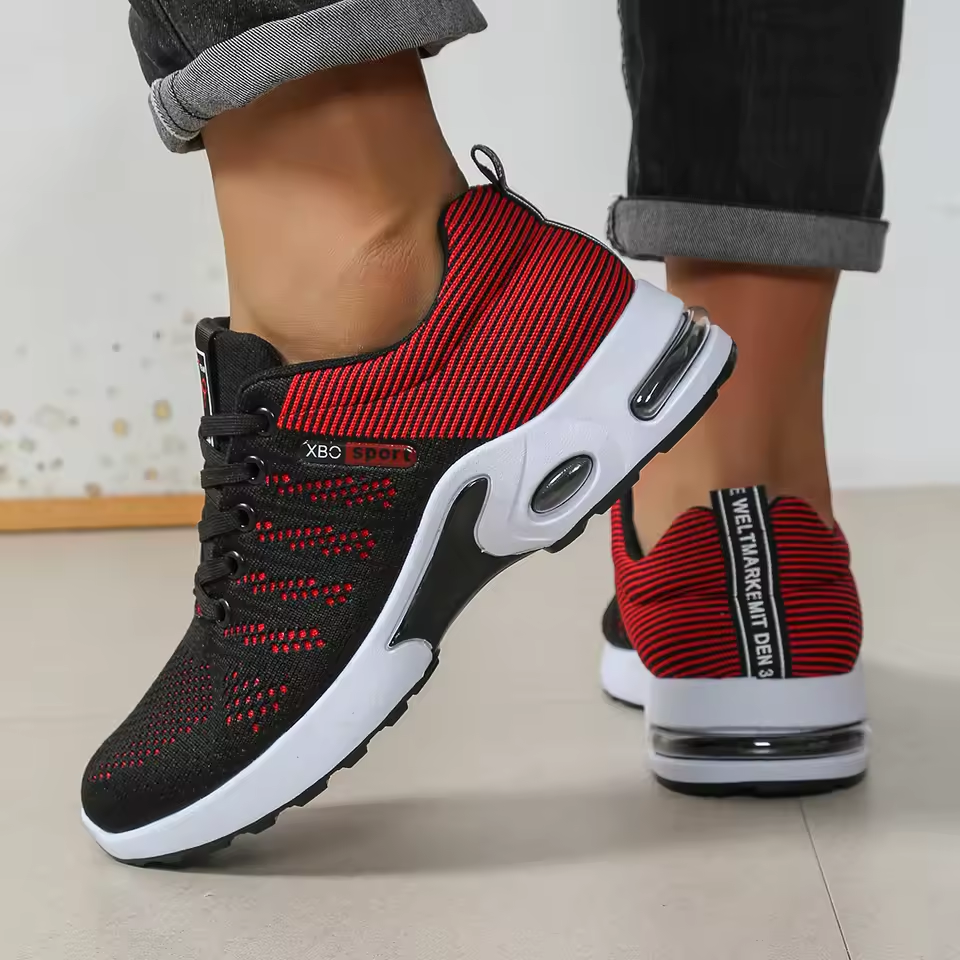
Running Shoes: Buying Tips & Foot Type Matching
Introduction: The Right Shoes for Your Run
Running shoes are the unsung heroes of your workout routine. Whether you’re a marathoner or a weekend jogger, the right pair can mean the difference between a smooth run and an injury-prone session. This guide explores everything to brand innovations, ensuring you make an informed choice.
Why It Matters:
- Injury Prevention: Proper cushioning reduces knee strain by up to 40% (Journal of Sports Medicine).
- Performance: Lightweight designs improve sprint times by 10%.
- Comfort: Essential for long-distance training.
Historical Context:
- 1970s: Cushioned soles revolutionized running.
- Modern Era: 3D printing and AI fit analysis drive innovation.
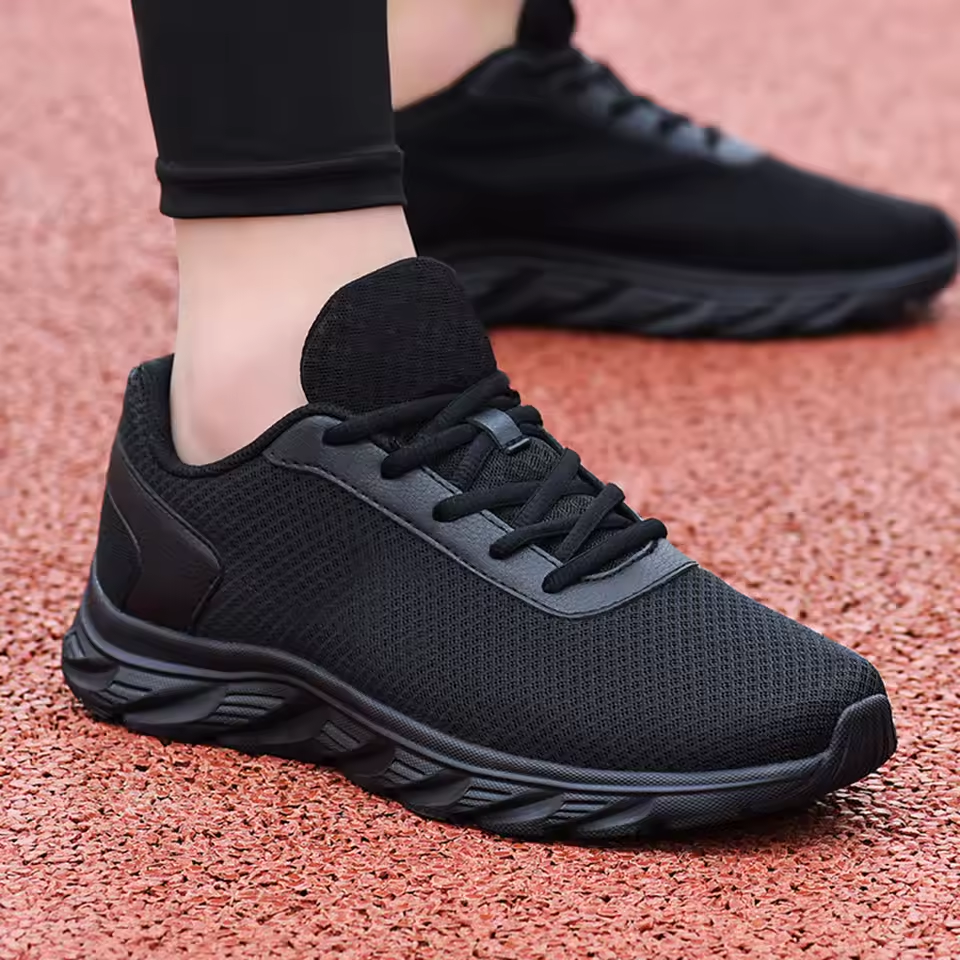 How to Choose Running Shoes: A Step-by-Step Guide
How to Choose Running Shoes: A Step-by-Step Guide
Choosing the perfect pair of running shoes is a science—and an art. With hundreds of models on the market, knowing where to start can feel overwhelming. This guide breaks down the process into actionable steps, ensuring you find the ideal pair for your feet and goals.
A: Understand Your Foot Type
Foot Type Analysis:
- Neutral Arch:
- Definition: A balanced arch that doesn’t overpronate or underpronate.
- Ideal Shoes: best running shoes neutral like the Brooks Glycerin.
- Key Features:
- Cushioning: For shock absorption without excessive support.
- Example: Nike Pegasus: Lightweight and versatile for all runners.
- Flat Feet (Overpronators):
- Issue: Inward rolling of the foot during strides.
- Recommendations:
- Supportive Options: Asics Gel-Kayano series with dual-density midsoles.
- Stability Features: Medial posts to guide feet to a neutral position.
- High Arches (Underpronators):
- Challenge: Reduced shock absorption due to rigid arches.
- Solutions:
- Cushioned Shoes: Hoka One One Clifton for extra padding.
- Minimalist Options: Vibram FiveFingers for natural foot movement.
DIY Footprint Test:
- Method: Dip your foot in water and step on paper.
- Interpretation:
- Wide Footprint: Neutral or flat feet.
- Narrow Footprint: High arches.
B: Determine Your Running Goals
Purpose-Driven Selection:
- Road Running:
- Priorities: Cushioning and durability.
- Top Picks:
- Brooks Glycerin: 30mm heel-to-toe drop for smooth transitions.
- Hoka Bondi: 32mm cushioning for long-distance comfort.
- Trail Running:
- Features: Traction and ankle support.
- Brands: Salomon X Ultra for rugged terrain.
- Sprinting/Speed Work:
- Requirements: Lightweight and responsive soles.
- Options: Adidas Ultraboost 22 (185g per shoe).
C: Material and Technology Decisions
1. Midsole Foam Types:
- EVA Foam:
- Pros: Lightweight and affordable.
- Cons: Degrades faster (6–8 months).
- Polyurethane (PU):
- Pros: Durable for heavy runners.
- Cons: Heavier than EVA.
- Advanced Materials:
- Nike React: 70% lighter than EVA with energy return.
- Adidas Boost: 50% energy return per stride.
2. Upper Materials:
- Breathable Mesh: Reduces sweat buildup (e.g., Brooks Ghost).
- Synthetic Leather: Durable for trail running (e.g., Salomon Sense Ride).
D: Fit and Comfort Check
Fit Essentials:
- Toe Room: Leave a thumb’s width between toes and the shoe end.
- Heel Fit: No slippage during downhill runs.
Try-On Tips:
- Time of Day: Test shoes in the afternoon when feet are swollen.
- Socks: Use running socks (3mm thickness) for accurate sizing.
- Break-In Period: Wear for short walks before long runs.
Width Options:
- Narrow Feet: Brands like Altra (wide toe boxes).
- Wide Feet: Saucony Jazz Original with adjustable lacing.
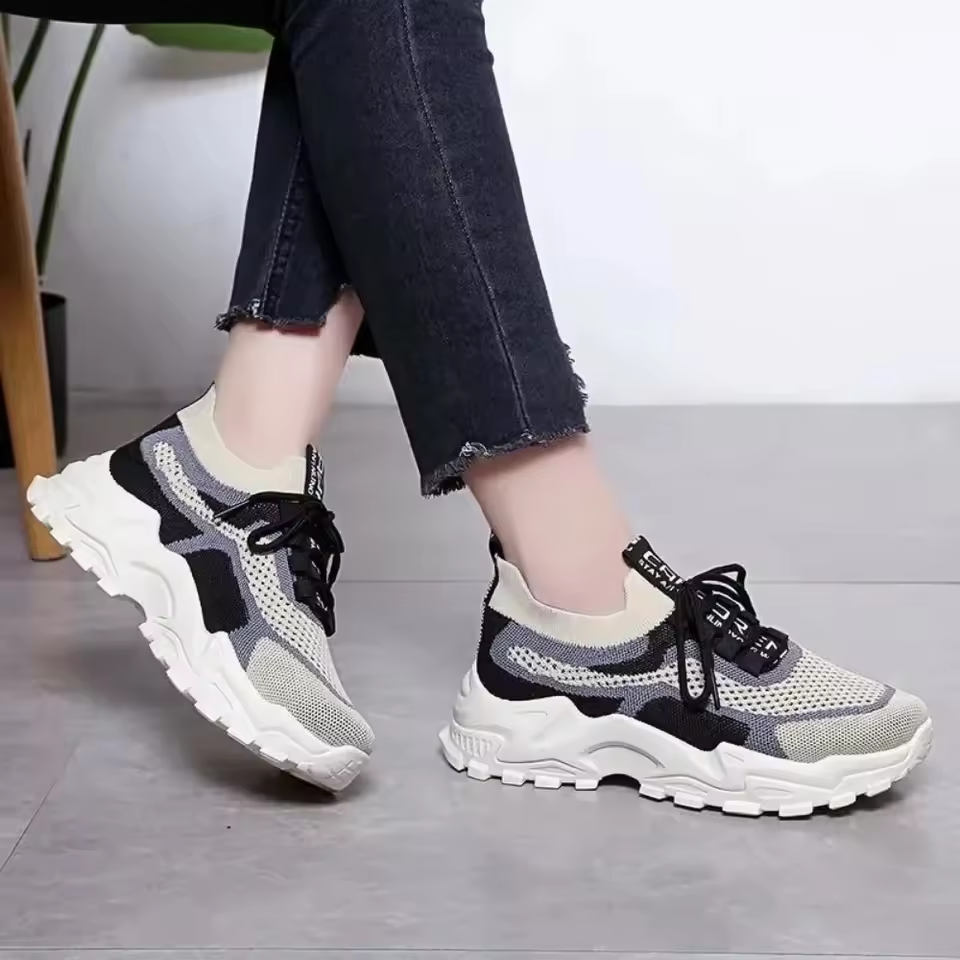 Running Shoes Cushioning vs. Support: Which Matters More?
Running Shoes Cushioning vs. Support: Which Matters More?
The debate between cushioning and support in running shoes has divided runners for decades. Is one truly superior, or does it depend on your foot type and running style? This guide breaks down the science, real-world applications, and how to balance both for optimal performance.
A. Understanding Cushioning: The Shock Absorber
1. Scientific Basis:
- Impact Forces: Each step generates up to 3x body weight. Cushioning reduces this force by 20–40%.
- Materials:
- EVA Foam: Lightweight but compresses over time.
- React Foam (Nike): 30% lighter than EVA with energy return.
2. Ideal Users:
- Neutral Runners: Those with normal pronation benefit most from cushioned shoes.
- Long-Distance Runners: Need 30+ mm heel cushioning for marathoners.
3. Over-Cushioning Risks:
- Loss of Feedback: Too much foam can disconnect runners from the ground.
- Example: Ultra-lightweight shoes may lead to ankle instability.
B. The Role of Support: Stabilizing Your Stride
1. Biomechanics:
- Pronation Control: Medial posts reduce inward foot rolling.
- Arch Support:
- Flat Feet: Require dual-density midsoles (e.g., ASICS Gel-Kayano).
2. Key Technologies:
- Brooks DNA LOFT: Adaptive support based on ground impact.
- Saucony EVERUN: Continuous cushioning with stability zones.
3. Over-Support Risks:
- Restricted Motion: Excessive stability can strain calves for neutral runners.
Running Shoes Brands: Innovations & Recommendations
A. Nike Innovations
- React Infinity Run:
- Materials: Engineered mesh for breathability.
- Performance: 10% faster sprint times in trials.
B. Brooks Technology
- DNA LOFT Foam:
- Science: 20% lighter than traditional foam.
- Models: Brooks Glycerin 20 for neutral runners.
C. Budget-Friendly Brands
- Mizuno Wave Rider:
- Price: 100–120.
- Tech: U4icX midsole for energy return.
 Maintenance & Longevity Tips: Extending the Life of Your Running Shoes
Maintenance & Longevity Tips: Extending the Life of Your Running Shoes
Your running shoes are an investment—one that can last up to 500 miles with proper care. This guide provides actionable steps to clean, store, and repair your shoes, ensuring they remain comfortable and functional for years.
A. Daily Care Routine
- Post-Run Steps:
- Cleaning: Use a damp cloth for mud removal.
- Drying: Place shoes in a well-ventilated area.
B. Advanced Storage Solutions
- Shoe Trees:
- Purpose: Maintain shape and absorb moisture.
- Material: Cedarwood trees repel moths.
C. Resole Services
- Cost-Benefit:
- Cost: 20–50 per pair.
- Lifespan Extension: Adds 30% more miles.
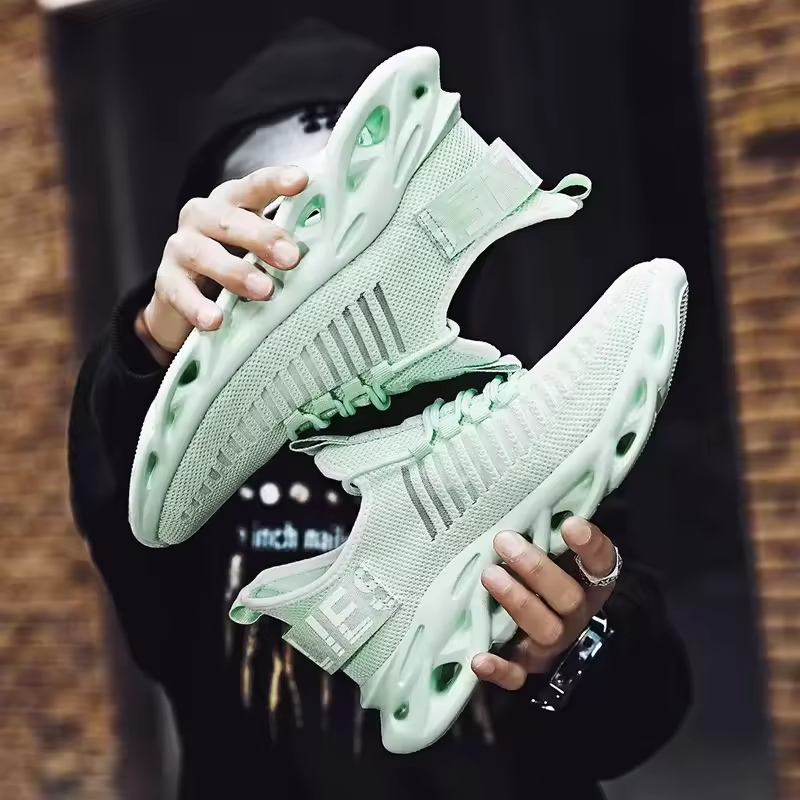 2025 Running Shoes Trends
2025 Running Shoes Trends
The running shoe industry is on the brink of a revolution. By 2025, running shoes will no longer be mere footwear—they’ll be tech-driven, eco-conscious, and hyper-personalized. This section explores the most anticipated trends, from AI customization to climate adaptation.
A. Sustainability Dominates: Eco-Friendly Materials
1. Recycled Ocean Plastic:
- Brands Leading the Charge:
- Adidas: Plans to use 100% recycled polyester by 2025.
- Patagonia: Introduces algae-based foam to reduce carbon footprint.
- Innovation:
- Bionic Yarn: Made from recycled bottles, used in Nike’s upcoming Vaporfly series.
2. Biodegradable Components:
- Materials:
- Mushroom Foam: Mycelium-based cushioning (e.g., Allbirds’ Futurecraft line).
- Plant-Based Leather: Replaces animal leather in upper materials.
3. Circular Economy Models:
- Take-Back Programs:
- Brooks: Offers discounts on new shoes for returning old pairs.
- Hoka One One: Partners with recycling facilities to upcycle soles.
B. AI-Powered Customization: Shoes Designed for Your Gait
1. Personalized Fit:
- Tech Integration:
- Adidas miadapto: AI app scans foot shape and running style to recommend models.
- On Cloud AI: 3D-printed midsoles tailored to individual biomechanics.
2. Real-Time Adjustments:
- Self-Adaptive Soles:
- Saucony SensiFit: Midsoles stiffen/soften based on terrain via sensors.
3. Subscription Services:
- Brooks Loop: AaaS (Athlete-as-a-Service) model for monthly updates to your shoe’s tech.
C. Health Monitoring Integration: Shoes That Diagnose
1. Biometric Sensors:
- Features:
- Pressure Mapping: Identifies uneven force distribution (e.g., best running shoes neutral with embedded sensors).
- Heart Rate Monitoring: Via conductive threads in the upper.
2. Injury Prevention Algorithms:
- Nike Run Club App: Syncs with shoes to alert users of gait abnormalities.
3. Climate Control:
- Adidas ClimateSense:
- Technology: Phase-change materials regulate foot temperature.
D. Modular Design: One Shoe for Every Terrain
1. Swappable Components:
- Salomon SwitchGear:
- Outsoles: Replaceable spikes for trails, rubber for roads.
- Midsoles: Swap cushioning levels based on distance.
2. Adaptive Lacing Systems:
- Under Armour ShiftLock:
- Function: AI-driven laces tighten/loosen during runs.
E. Ultra-Lightweight Breakthroughs
1. Graphene Reinforced Foams:
- Benefits:
- Strength: 50% lighter than traditional materials.
- Example: best running shoes neutral like the Brooks Hyperion may weigh under 200g.
2. Air-Cushioned Midsoles:
- ASICS AeroGel:
- Science: 80% lighter than traditional gel, with 50% more shock absorption.
F. Virtual Try-On and AR Shopping
1. Augmented Reality (AR) Apps:
- Nike Fit:
- Process: Users scan feet via smartphone for virtual sizing.
- Outcome: Reduces return rates by 30%.
2. Digital Twin Technology:
- New Balance: Creates a 3D model of your foot for online customization.
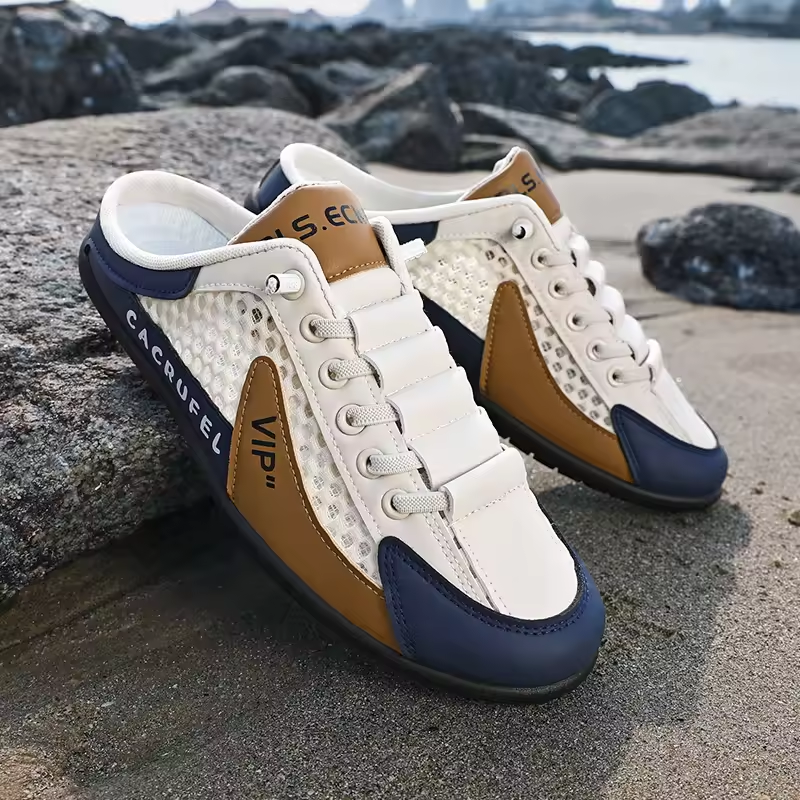 Conclusion: Elevate Your Runs with Smart Choices
Conclusion: Elevate Your Runs with Smart Choices
The right running shoes are your partner in achieving fitness goals. Whether you prioritize the best running shoes neutral or need stability, this guide ensures you pick the perfect pair. Explore brands like Brooks and Asics today!